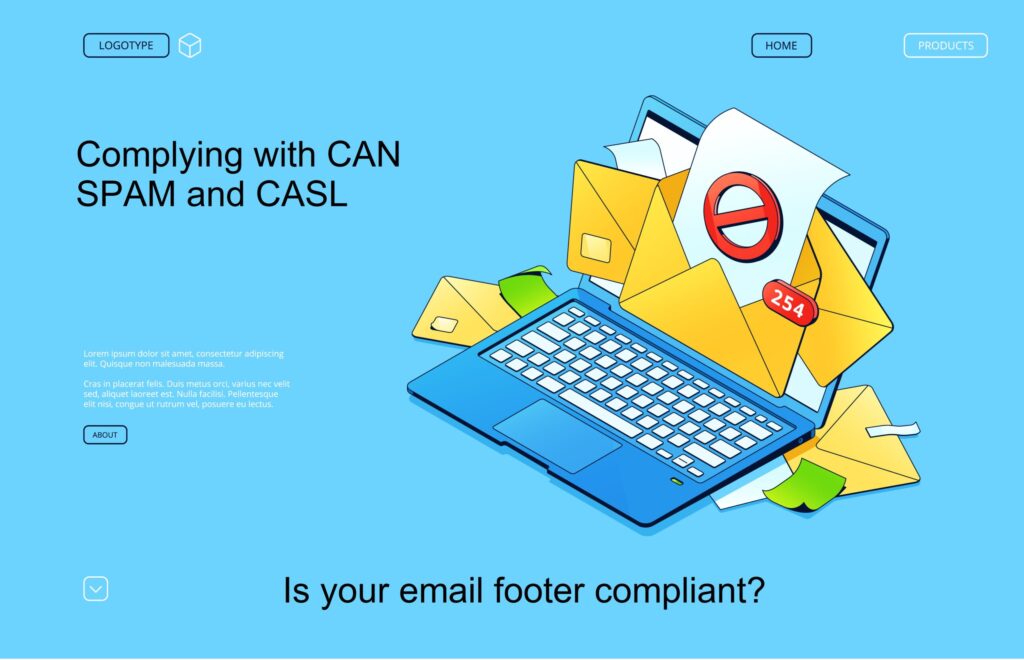Your most valuable asset as a team worker, creative professional or entrepreneur isn’t your brilliant idea or your startup capital—it’s your time.
That’s why productivity matters more than you might think. Picture this: you’re juggling client calls, crunching numbers, and trying to innovate all at once. Sound familiar? That’s where the magic of productivity comes in.
Think about it. When you’re productive, you’re learning and evolving faster, staying ahead of the curve in your industry. You’re also cutting through the clutter, making every minute count, which means more time for what really moves the needle in your business. And let’s not forget the bottom line, efficient operations translate directly to cost savings, giving you more resources to contribute to your company and career or to fuel your entrepreneurial dreams.
But here’s the kicker: productivity isn’t about working yourself to the bone. It’s about working smarter, not harder. It’s finding those sweet spots in your day when you’re at your best and leveraging them. It’s about saying “no” to the noise and “yes” to what truly matters. So people, embrace productivity. It’s not just a buzzword—it’s your secret weapon for turning your vision into reality, one efficient step at a time. Ready to level up your productivity game? Your future self (and your business) will thank you.
In this comprehensive guide, I’ll share my tried-and-true strategies for boosting efficiency, managing your time effectively, and cultivating a mindset that propels you towards success. Whether you’re just starting out or a seasoned business owner, these techniques will help you unleash the entrepreneur within and achieve your goals with ease.
The History behind the Desire for Productivity
The quest for efficiency and productivity has been a driving force behind human progress for centuries, shaping the way we work and live. From ancient civilizations to modern startups, this pursuit has been a constant companion in our collective journey towards advancement.
The concept of productivity as we know it today began to take shape during the Industrial Revolution of the 18th and 19th centuries. This period marked a significant turning point in history, as manual labor and animal-based production gave way to machine-based manufacturing. Factory owners and managers became obsessed with maximizing output while minimizing input, leading to the birth of modern efficiency techniques.
One of the most influential figures in this era was Frederick Winslow Taylor, often referred to as the father of scientific management. Taylor’s time and motion studies in the late 19th century aimed to find the “one best way” to perform any given task. His methods, while controversial, laid the groundwork for many of the productivity principles we still use today.
As we moved into the 20th century, the focus on efficiency expanded beyond the factory floor. The rise of office work brought new challenges and opportunities for productivity improvement. Innovations like the typewriter, telephone, and later, the computer, revolutionized how we process and communicate information.
For today’s creative professionals, entrepreneurs and small business owners, understanding this historical context is crucial. The tools may have changed – we now have project management software instead of stopwatches – but the underlying principles remain the same. The goal is still to achieve more with less, to work smarter rather than harder.
TABLE OF CONTENTS
Section one: The Power of Streamlining
- Why Efficiency is Key for Entrepreneurs
- Techniques for Efficiency
- Supercharging Productivity with Apps and Software
Section two: Delegation and Outsourcing
Section three: Worklife Balance
Section One: The Power of Streamlining:
Why Efficiency is Key for Entrepreneurs
As an entrepreneur, your time is one of your most valuable assets. Every minute you spend on unnecessary tasks or inefficient processes is a minute that could have been dedicated to growing your business. That’s why streamlining your operations is crucial for maximizing productivity and achieving your goals.
Streamlining involves identifying and eliminating bottlenecks, redundancies, and inefficiencies in your workflows. By doing so, you can reduce the time and effort required to complete tasks, freeing up valuable resources that can be redirected towards more productive endeavors.
Imagine being able to accomplish in a single day what previously took you an entire week. That’s the power of streamlining – it allows you to do more with less, enabling you to scale your business and achieve your goals faster than ever before.

Techniques for Efficiency
Streamlining your business operations is a multi-faceted process that involves analyzing and optimizing various aspects of your workflow. Here are some proven techniques to help you get started:
Automation: Leverage technology to automate repetitive tasks and eliminate manual processes. From invoicing and bookkeeping to social media management and email marketing, there are countless tools and software solutions available to streamline your operations.
Outsourcing and Delegation: As an entrepreneur, it’s important to recognize that you can’t do everything yourself. Outsource or delegate tasks that are not part of your core competencies to free up time and focus on your strengths.
Process Mapping: Create visual representations of your business processes to identify bottlenecks, redundancies, and areas for improvement. This will help you understand where inefficiencies lie and how to address them effectively.
Continuous Improvement: Streamlining is an ongoing process. Regularly review your operations and seek feedback from employees, customers, and industry experts to identify areas for further optimization.
Lean Principles: Also known as Kaizen, adopt lean principles such as eliminating waste, optimizing workflow, and focusing on value-added activities. This approach, popularized by companies like Toyota, can lead to significant improvements in efficiency and productivity. To learn more about Kaizen, check out Vorne’s article outlining the lean manufacturing technique and the benefits it can bring to your business.
Standard Operating Procedures (SOPs): Develop SOPs for repetitive tasks to ensure consistency and efficiency. SOPs can also make it easier to train new employees and maintain high standards of quality.
By implementing these techniques, you’ll be able to eliminate waste, reduce costs, and increase productivity – all while providing a better experience for your customers and employees.
Supercharging Productivity with Apps and Software
In today’s digital age, there’s no shortage of apps and software solutions designed to help entrepreneurs like you streamline their operations and boost productivity. From project management tools to communication platforms, these technologies can be game-changers for your business.
Here are some must-have apps and software to consider:
Project Management Tools: Platforms like Asana, Trello, and Monday.com can help you organize tasks, assign responsibilities, and track progress seamlessly, ensuring that projects stay on track and deadlines are met.
Communication and Collaboration Tools: Applications like Slack, Openphone, Microsoft Teams, and Zoom facilitate real-time communication and collaboration, enabling your team to work together efficiently, regardless of their physical location.
Cloud Storage and File Sharing: Services like Google Drive, Dropbox, and Box allow you to store and share files securely, ensuring that everyone has access to the latest versions and eliminating the need for endless email attachments.
Time Tracking and Invoicing Software: Tools like Harvest, FreshBooks, and QuickBooks can streamline your time tracking, invoicing, and accounting processes, saving you countless hours and reducing the risk of errors.
Focus Apps: Applications like Forest, Freedom, and RescueTime can help you stay focused and minimize distractions, ensuring that you make the most of your time and energy.
Customer Relationship Management (CRM): Tools like Salesforce, HubSpot, and Zoho CRM can help you manage your customer interactions, track sales, and improve customer satisfaction.
Email Marketing Software: Platforms like Mailchimp, Constant Contact, and SendinBlue can automate your email marketing campaigns, helping you reach your audience more effectively.
Analytics and Reporting Tools: Software like Google Analytics, Tableau, and Power BI can provide valuable insights into your business performance, helping you make data-driven decisions.
By leveraging these apps and software solutions, you can automate tedious tasks, enhance collaboration, and increase overall efficiency, allowing you to focus on the strategic aspects of your business.
Section two: Delegation and Outsourcing:
Maximizing Your Time and Resources
As an entrepreneur, one of the most valuable lessons I’ve learned is the importance of delegation and outsourcing. Trying to handle every aspect of your business yourself is not only inefficient but also unsustainable in the long run.
By delegating tasks to trusted team members or outsourcing to skilled professionals, you can free up your time and energy to focus on the core aspects of your business that truly drive growth and innovation.
Here are some key areas where delegation and outsourcing can be particularly beneficial:
Administrative Tasks: From data entry and scheduling to customer service and bookkeeping, administrative tasks can be time-consuming and often don’t require your direct involvement. Consider delegating or outsourcing these tasks to virtual assistants or specialized service providers.
Marketing and Advertising: Unless you have a background in marketing, it can be challenging to navigate the ever-changing landscape of digital marketing, social media advertising, and content creation. Outsourcing these tasks to experienced professionals can help you reach your target audience more effectively and efficiently.
Web Development and IT Support: Building and maintaining a robust online presence is essential for modern businesses, but it can be a complex and technical endeavor. Consider outsourcing web development, design, and IT support to ensure that your digital assets are optimized and secure.
Legal and Financial Services: Navigating the legal and financial aspects of running a business can be daunting. Outsourcing to lawyers, accountants, and financial advisors can provide you with expert guidance and help you avoid costly mistakes.
Content Creation: High-quality content is crucial for engaging your audience and building your brand. Outsource content creation, such as blog posts, videos, and graphics, to professional writers and designers to ensure that your content is compelling and consistent. Find qualified professionals on popular freelance platforms such as Upwork, Fiverr, or Guru.com.
Customer Support: Providing excellent customer support is vital for maintaining customer satisfaction and loyalty. Consider outsourcing customer support to dedicated service providers who can handle inquiries and issues promptly and professionally. Or consider using AI chatbots such as Salesforce’s Einstein 1 service cloud which can integrate with your CRM technology to provide optimized responses to your clients.
Research and Development: If your business involves innovation or product development, outsourcing certain research and development tasks to specialized firms or consultants can bring in fresh perspectives and expertise.
Virtual Business Address and Check Depositing: No matter what stage or size of your business, all of your documents and papers mailed to you will pile up leaving you wasting valuable time organizing and handling your mail. Outsourcing via a virtual mailbox service can save you the hassle by receiving and digitizing your mail, sending you PDF versions straight to your phone! Request to have your junk mail shredded, return your mail to its sender, and
Virtual Assistant Services: Virtual assistants, also known as “VA’s” or sometimes “personal assistants,” are becoming a staple in many business operations. Especially with today’s growing trend of the Hyrbrid work model and the Virtual Office. Whether you’re short on hands or just want to free yourself from menial tasks, there are benefits to hiring a virtual assistant.
One virtual service could be having a third-party assistant deposit your checks deposited right into your account, skipping that long line at the bank. Virtual mailbox services boast many more benefits to your business, look into how a virtual mailbox will simplify your business’s postal services.
By delegating and outsourcing tasks that fall outside your core competencies, you can focus your time and energy on the areas where you excel, driving innovation and growth for your business.

Time Management Hacks for Entrepreneurs
Effective time management is essential for any entrepreneur looking to boost productivity. By mastering the art of prioritization, you can ensure that your most important tasks are completed first, leaving less critical activities for later. Here are some strategies to help you manage your time more effectively:
The Eisenhower Matrix: Named after President Dwight D. Eisenhower, it helps you prioritize tasks based on urgency and importance. First off, list off all of your tasks for a specific day, job, project etc. Then categorize these tasks into the following four quadrants:
- Quadrant 1: Urgent and Important (Do First)
- Critical tasks that need immediate attention.
- Examples: Meeting deadlines, handling crises.
- Quadrant 2: Not Urgent but Important (Schedule)
- Long-term goals and important activities that don’t need immediate action.
- Examples: Strategic planning, personal development.
- Quadrant 3: Urgent but Not Important (Delegate)
- Tasks requiring immediate attention but not crucial to your goals.
- Examples: Interruptions, some meetings.
- Quadrant 4: Not Urgent and Not Important (Eliminate)
- Time-wasting activities that are neither urgent nor important.
- Examples: Mindless browsing, excessive social media.
Check off tasks as you complete them and regularly adjust your quadrants to make it simple and easy for you to prioritize the most important tasks at hand.
Time Blocking: Allocate specific blocks of time for different tasks or activities. This helps you stay focused and prevents you from getting sidetracked by less important tasks.
The Pomodoro Technique: Created by Francesco Cirillo in the late 1980s, is a time management method that breaks work into 25-minute focused intervals called “Pomodoros,” followed by short breaks. This approach helps maintain high levels of focus and prevents burnout. Here’s how to implement it:
- Choose a Task: Select a specific task to work on.
- Set a Timer: Set a timer for 25 minutes.
- Work Intensely: Focus solely on the task until the timer rings.
- Take a Short Break: Take a 5-minute break to relax and recharge.
- Repeat: After four Pomodoros, take a longer break (15-30 minutes).
- Set SMART Goals: Ensure that your goals are Specific, Measurable, Achievable, Relevant, and Time-bound. This will help you stay focused and motivated, and make it easier to track your progress.
Visit https://www.pomodorotechnique.com/ to learn more about the Pomodoro technique and download their free desktop timer
Batch Processing: Group similar tasks together and complete them in one go. For example, designate specific times for checking emails, making phone calls, or working on social media. This reduces the cognitive load of switching between different types of tasks.
Prioritize Daily Tasks: At the beginning of each day, list the top three tasks that must be completed by the end of the day. This helps you stay focused on your most critical priorities.
Use a Digital Calendar: Utilize digital calendars like Google Calendar to schedule tasks, set reminders, and block off time for focused work. This ensures that you allocate time effectively and avoid overcommitting.
Delegate and Say No: Recognize that you can’t do everything yourself. Delegate tasks that others can handle and learn to say no to commitments that don’t align with your priorities.
Minimize Distractions: Identify common distractions and take steps to minimize them. This might involve setting specific times for checking social media, turning off notifications, or creating a designated workspace.
By implementing these time management strategies, you can ensure that you’re always working on the most important tasks and make the most of your time and energy.

Tips for Effective Communication and Collaboration
Effective communication and collaboration are essential for any successful business venture. As an entrepreneur, you’ll often need to coordinate with team members, partners, and clients to ensure that projects run smoothly and goals are achieved, while avoiding mistakes and confusion that end up costing valuable time.
Here are some tips to help you improve communication and collaboration within your organization:
Establish Clear Communication Channels: Determine the preferred methods of communication for your team, whether it’s email, instant messaging, or project management tools. Ensure that everyone is on the same page and knows where to find important information.
Regular Check-ins: Schedule regular check-ins or meetings with your team to discuss progress, address any issues, and provide updates. This helps ensure that everyone is aligned and working towards the same goals.
Active Listening: Practice active listening by fully focusing on the speaker, acknowledging their points, and providing thoughtful feedback. This fosters mutual respect and understanding, which are key for effective collaboration.
Use Collaborative Tools: Leverage tools like Google Workspace, Microsoft Teams, or Slack to facilitate real-time collaboration on documents, spreadsheets, and presentations. These platforms also enable seamless communication and file sharing.
Provide Constructive Feedback: Offer feedback that is specific, actionable, and focused on improvement. Constructive feedback helps team members grow and ensures that everyone is contributing to the best of their abilities.
Encourage Open Communication: Foster a culture of openness where team members feel comfortable sharing their ideas, concerns, and suggestions. This can lead to more innovative solutions and a more cohesive team.
Set Clear Expectations: Clearly communicate your expectations for tasks, projects, and performance. This helps avoid misunderstandings and ensures that everyone knows what is expected of them.
Foster a Collaborative Culture: Encourage collaboration by promoting teamwork and recognizing the contributions of team members. Celebrate successes together and create opportunities for team-building activities.
By improving communication and collaboration within your organization, you’ll be able to work more efficiently, solve problems more effectively, and create a positive and productive work environment.
Section three: Work-Life Balance for Entrepreneurs
Maintaining a healthy work-life balance is crucial for long-term success and well-being. As an entrepreneur, it’s easy to become consumed by your business, but it’s important to make time for yourself and your loved ones.
Here are some strategies to help you achieve a better work-life balance:
Set Boundaries: Establish clear boundaries between work and personal time. This might involve setting specific work hours, creating a designated workspace, and avoiding work-related tasks during personal time.
Prioritize your Personal Wellness: Make time for activities that promote your physical and mental well-being, such as exercise, meditation, hobbies, and spending time with loved ones. Self-care helps you recharge and maintain your productivity.
Take Breaks: Regular breaks throughout the day can help prevent burnout and maintain your focus. This is how the Pomodoro Technique works, maximizing your productivity by taking short breaks after focused work intervals.
Delegate and Outsource: Recognize that you don’t have to do everything yourself. Delegate tasks to team members or outsource to professionals, allowing you to focus on high-priority tasks and reduce your workload.
Plan Personal Time: Schedule personal time just as you would business meetings. Block off time for family, friends, and activities you enjoy, and make it a non-negotiable part of your routine.
Unplug: Disconnect from work-related technology during your personal time. This might involve turning off email notifications, avoiding work-related social media, and setting boundaries for phone calls and messages.
Seek Support: Share your entrepreneurial journey with friends and family, and seek their support and understanding. Building a strong support network can help you manage stress and maintain a healthy work-life balance.
Practice Mindfulness: Incorporate mindfulness practices into your daily routine, such as meditation, deep breathing, or yoga. Mindfulness can help you stay present, reduce stress, and improve your overall well-being.
Reflect and Adjust: Regularly reflect on your work-life balance and make adjustments as needed. What works for you at one stage of your business might not work at another, so be flexible and willing to adapt.
Achieving a work-life balance is an ongoing process that requires intentional effort and regular adjustments. By prioritizing your well-being and personal relationships, you’ll be better equipped to manage the demands of entrepreneurship and achieve long-term success.
Self-Improvement Techniques for Entrepreneurs
As an entrepreneur, personal growth and self-improvement are essential for staying ahead of the curve and driving your business forward. The most successful entrepreneurs are those who continually seek to expand their knowledge, develop new skills, and cultivate a growth mindset.
Here are some self-improvement techniques that can help you unlock your full potential:
Continuous Learning: Make a commitment to lifelong learning by reading books, attending workshops or seminars, taking online courses, or seeking out mentors in your industry. Expanding your knowledge and skills will not only benefit your business but also keep you intellectually stimulated and engaged.
Reflection and Self-Awareness: Regular self-reflection can help you identify areas for improvement, recognize your strengths and weaknesses, and make more informed decisions. Set aside time for journaling, meditation, or simply quiet contemplation to gain a deeper understanding of yourself and your goals.
Goal Setting and Action Planning: Clearly defined goals and action plans can provide direction and motivation for your self-improvement efforts. Break down your larger goals into smaller, actionable steps and track your progress regularly.
Seek Feedback: Don’t be afraid to ask for feedback from trusted colleagues, mentors, or even customers. Constructive feedback can shed light on blind spots and areas for improvement that you may have overlooked.
Embrace Failure and Learn from Mistakes: Failure is an inevitable part of the entrepreneurial journey. Instead of fearing it, embrace it as an opportunity to learn and grow. Analyze your mistakes, identify the lessons, and use that knowledge to make better decisions in the future.
Practice Self-Care: Self-improvement isn’t just about acquiring new skills or knowledge; it’s also about taking care of your physical and mental well-being. Practice daily exercise, healthy eating, and stress-management practices to ensure that you have the energy and focus to tackle your self-improvement goals.
By incorporating these self-improvement techniques into your routine, you’ll not only become a more well-rounded and effective entrepreneur but also cultivate a growth mindset that will serve you well in all aspects of your life.
Motivation and Mindset: Finding Inspiration to Succeed
Entrepreneurship is a journey filled with ups and downs, triumphs, and challenges. Maintaining motivation and a positive mindset is essential for navigating this rollercoaster and achieving long-term success.
Here are some strategies that have helped me stay inspired and focused on my goals:
Surround Yourself with Positivity: The people you surround yourself with can have a profound impact on your mindset and motivation. Seek out like-minded individuals who share your passion and drive, and build a supportive network of entrepreneurs, mentors, and peers.
Celebrate Small Wins: Entrepreneurship is a marathon, not a sprint. Celebrate the small victories along the way, whether it’s landing a new client, hitting a sales target, or achieving a personal milestone. Recognizing these wins will help you stay motivated and appreciate the progress you’re making.
Visualize Success: Visualization is a powerful tool for shaping your mindset and keeping your goals top of mind. Take time to vividly imagine what success looks like for you and your business. This can help you stay focused and motivated, even during challenging times.
Practice Gratitude: Cultivating an attitude of gratitude can help shift your mindset from one of scarcity to one of abundance. Take time each day to reflect on the things you’re grateful for, whether it’s your health, your supportive network, or the opportunities that have come your way.
Seek Inspiration from Others: Look to successful entrepreneurs and leaders you admire for inspiration and motivation. Read their stories, watch interviews or speeches, and learn from their experiences and mindsets.
Embrace Challenges: Instead of viewing challenges as obstacles, reframe them as opportunities for growth and learning. Embrace the difficulties that come your way and use them as fuel to push yourself further.
Remember, motivation and mindset are not static – they require constant nurturing and attention. By implementing these strategies, you’ll be better equipped to stay inspired, focused, and resilient on your entrepreneurial journey.
Conclusion: Unleashing Your Inner Entrepreneur
Congratulations! You’ve made it through this comprehensive guide on supercharging your productivity as an entrepreneur. By embracing the strategies and techniques outlined here, you’ve taken a significant step towards unleashing your full potential and achieving your business goals.
As an entrepreneur, it is imperative that you continuously seek out new ways to streamline your operations, leverage technology, delegate and outsource tasks, and maintain a healthy work-life balance. Embrace self-improvement, effective communication, and collaboration, and never lose sight of the motivation and inspiration that fueled your entrepreneurial dreams.
Let’s start to talk!
We’d love to hear from you.
